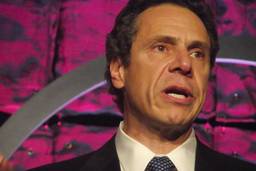If any publication was going to document the sickness known as Potomac Fever, it was going to be the Washington Post.
Last month, the newspaper penned a front-page dispatch headlined “Housing Accord Puts Builders First; Strapped Homeowners Offered Little Aid.” It described congressional leaders agreeing to “provide billions of dollars in tax rebates to the slumping home-building industry while offering little to homeowners threatened with foreclosure.” The bill proposes $6 billion in corporate tax cuts, while “families who cannot afford to repay their home loans – the group at the heart of the mortgage meltdown” would get less than 2 percent of that for “counseling services.”
Next to this story was a report labeled “Sweeping Bills Passed to Help Homeowners.” It told of Maryland state lawmakers “toughening oversight of the mortgage-lending industry and establishing preemptive measures to help people at risk of foreclosure.”
The newspaper page was a scientific proof, with states as the control. They show what minimally healthy democratic systems do: help ordinary people. That’s different from a Congress ravaged by Potomac Fever – the disease inside the Washington Beltway inhibiting emotions like compassion and integrity. As the housing crisis intensifies, this malady is getting worse.
For example, states like Oregon are cracking down on predatory lenders, while North Carolina and Minnesota are the latest to regulate abusive mortgage fees. Yet, Congress – debilitated by the fever – does nothing to halt banks’ usurious practices that originally created the mortgage meltdown.
State legislators are demanding aid to borrowers. Delegate Dereck Davis (D-Md.) told the Washington Post that homeowners “need a federal bailout from Congress.”
But in the land of Potomac Fever, bailouts are for financial firms. Congressman Barney Frank (D-Mass.) in fact, told newspapers “it’s irrelevant” how many homeowners – if any – are ever helped. According to The Hill newspaper, he is pushing industry-backed legislation that would federally guarantee banks’ outstanding mortgages for modest write-downs. The proposal deliberately avoids forcing banks to freeze interest rates.
Because the plan is voluntary, lenders “will just dump their worst loans into the system,” says economist Dean Baker. The Congressional Budget Office adds that the proposal focuses not on rescuing homeowners, but on “shift[ing] the risk involved in mortgage losses from the current lenders and investors to taxpayers.”
Such virulent strains of Potomac Fever have many causes. One is the proximity of lawmakers to constituents. Many state representatives serve part time and are not career politicians, meaning they have authentic connections to local communities and therefore often better reflect public priorities. By contrast, professional lawmakers in Washington are insulated from real-world pressures by six-figure salaries, security sentries and servile staffers.
Campaign contributions are also a culprit. Though industries certainly influence state legislators, Big Money has a tougher time controlling 50 separate state capitals than one U.S. Capitol. And, boy, is the money flowing in D.C. Reporting on the housing crisis, Politico.com says “campaign donations from affected industries have spiked [and] lobbyists also are making money off the misery.” Banks pleading poverty somehow have plenty of resources to buy influence.
Finally, there is the filibuster – a tool that does not exist in state legislatures. Coupled with the U.S. Senate’s undemocratic structure giving Delaware as many votes as California, the filibuster allows 41 politicians representing just 11 percent of America’s total population to stop almost anything. Corporate lobbyists and their Senate allies have used the filibuster to obstruct legislation representing the public’s economic interests.
Can Potomac Fever be stopped? Maybe not, considering most inside the Beltway are so afflicted they have lost the capacity to even see it. Then again, the more bold actions states take, the more ill Washington will look. Perhaps the embarrassing contrast can cure the plague.

I hope you found this article important. Before you leave, I want to ask you to consider supporting our work with a donation. In These Times needs readers like you to help sustain our mission. We don’t depend on—or want—corporate advertising or deep-pocketed billionaires to fund our journalism. We’re supported by you, the reader, so we can focus on covering the issues that matter most to the progressive movement without fear or compromise.
Our work isn’t hidden behind a paywall because of people like you who support our journalism. We want to keep it that way. If you value the work we do and the movements we cover, please consider donating to In These Times.







